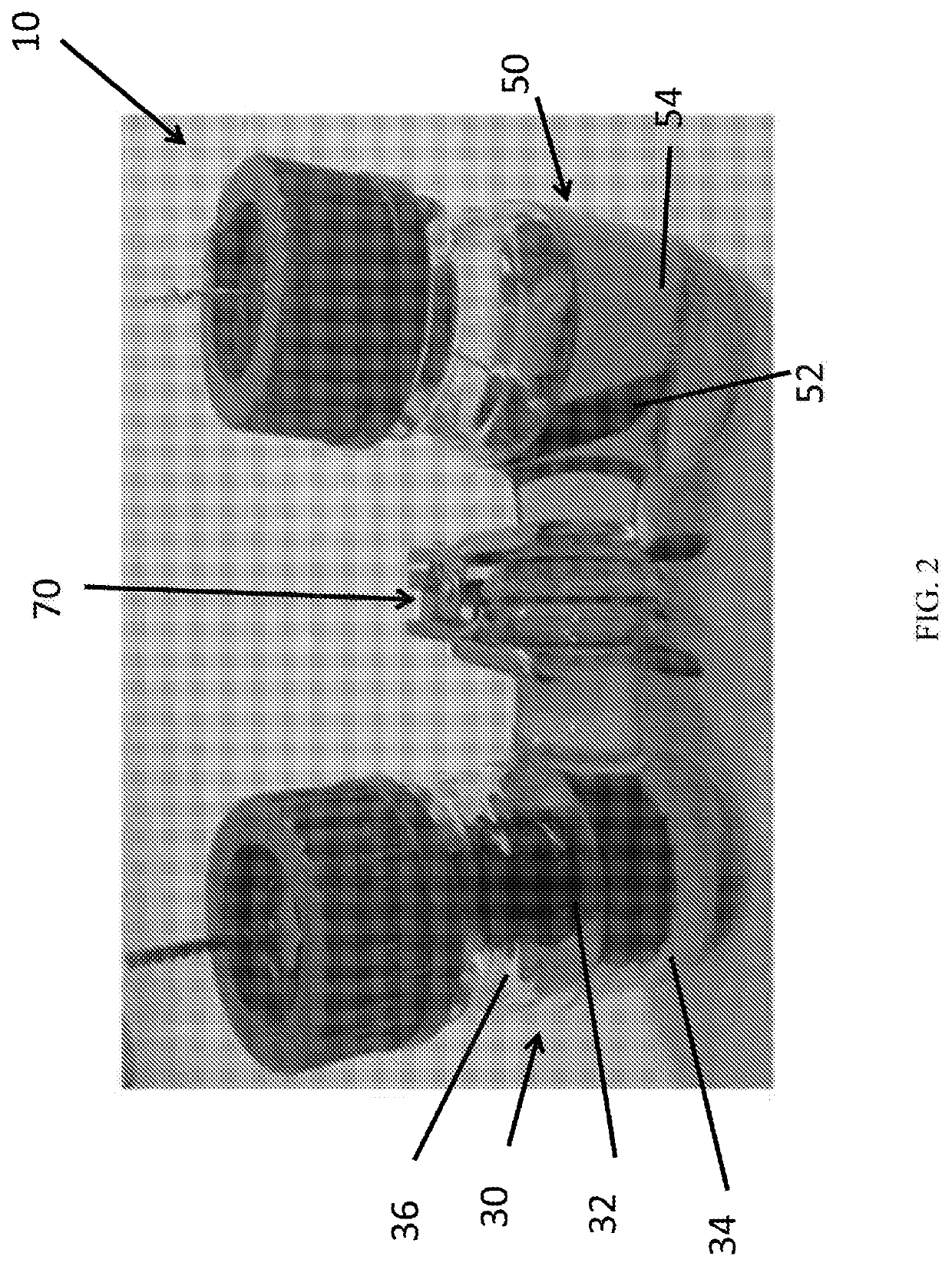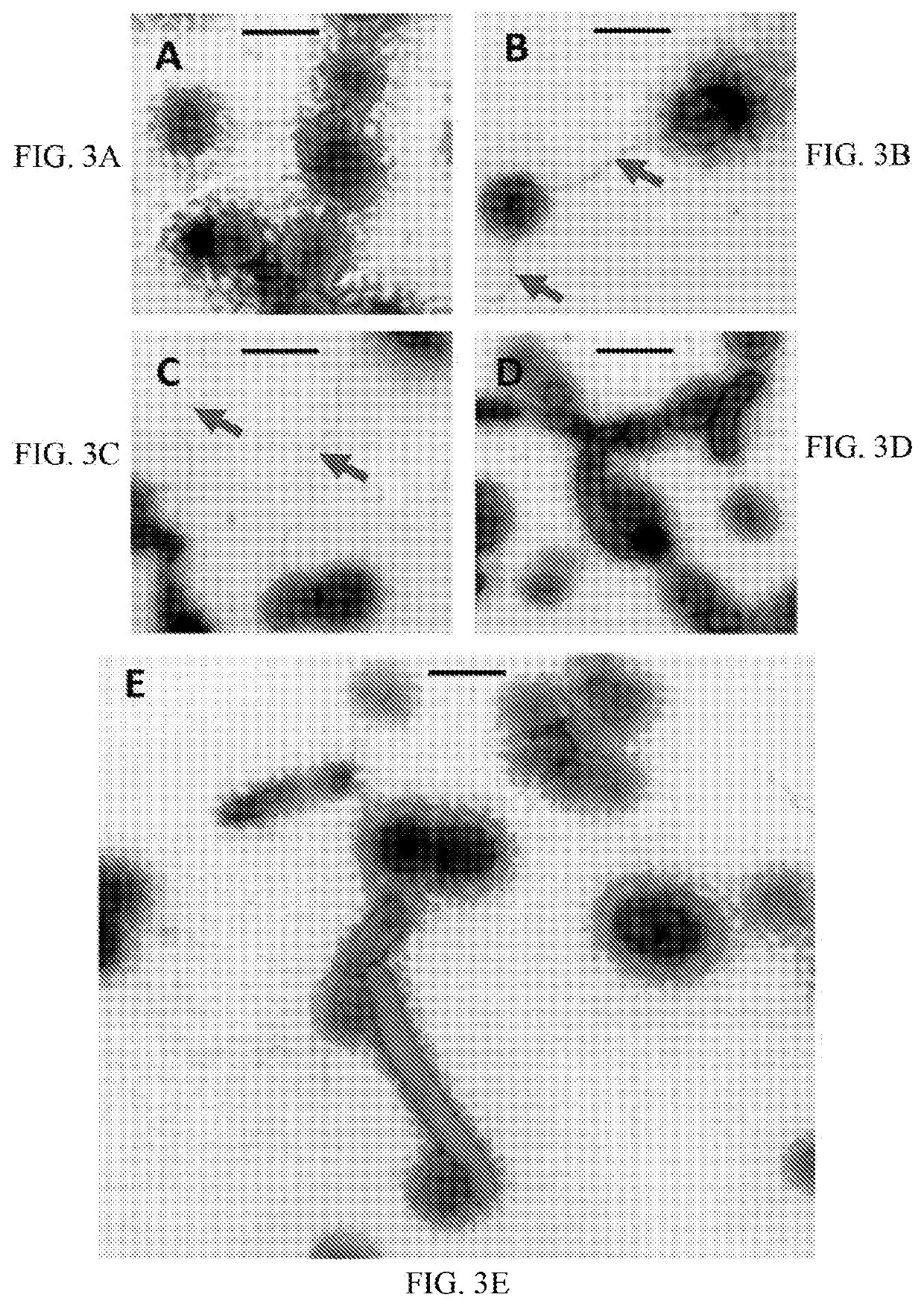Devices and methods for generating electrical current from methane
a technology of electrical current and methane, which is applied in the field of devices, can solve the problems of large greenhouse gas emissions, toxic and expensive exogenous supply of electron shuttle molecules, and damage to the atmospher
- Summary
- Abstract
- Description
- Claims
- Application Information
AI Technical Summary
Benefits of technology
Problems solved by technology
Method used
Image
Examples
example 1
Engineering Methanosarcina acetivorans to Produce Methyl-Coenyzine Reductase
[0164]Materials and Methods. M. acetivorans strains were engineered to produce methyl-coenyzme M reductase (i.e., Mcr) from an unculturable ANME population 1 (i.e., ANME-1), identified in Black Sea mats, as described in Soo et al. Soo et al. is incorporated herein by reference in its entirety. The M. acetivorans strains employed in this Example are set forth below in Table 1 (i.e., M. acetivorans AA and M. acetivorans C2A).
TABLE 1StrainDescriptionSourceM. acetivorans AAair-adapted M. acetivoransJasso-Chavez et al.G. sulfurreducens PCAwildtype G. sulfurreducensJ. G. FerryM. acetivorans C2Awildtype M. acetivoransSowers et al.(1984) Appl.47: 971-978Plasmids (i.e.,Recombinant ExpressionCassettes)pES1(i.e., Pmat)AmpR, PurR, R6K ori, C2A ori, Pmcr—ANME-ISoo et al. (2016)15: 11pES1-MATmcr3AmpR, PurR, R6K ori, C2A ori, Pmcr—ANME-1::mcrANME-1Soo et al. (2016)15: 11
[0165]M. acetivorans AA (2 mL) and M. acetivorans C2A...
example 2
Generating a Microbial Consortium Including Engineered M. acetivorans, Geobacter sulfurreducens, and Methane-Acclimated Sludge Microorganisms
[0168]Materials and Methods Microbial Strains and Cultivation Conditions. Engineered M. acetivorans AA and M. acetivorans C2A transformed with Pmat or pES1-MATmcr3 plasmids were produced as described in Example 1. The engineered M. acetivorans AA and M. acetivorans C2A were grown anaerobically as pre-cultures at 37° C. in an 80% N2 / 19% CO2 / 1% H2 atmosphere with mild shaking in HS or HSYE medium (10 mL) with methanol (125 mM) as the carbon source, as described in Metcalf et al. (1996) J. Bacteriol. 178: 5797-5802, unless otherwise indicated. All 28-mL culture tubes (18×150 mm, Bellco Glass) were sealed by aluminum crimp seals. Pmat and pES1-MATmcr3 plasmids were maintained in the engineered M. acetivorans AA and M. acetivorans C2A with puromycin (2 μg / mL), and methane served to induce ANME Mcr production, as described in Soo et al.
[0169]Experime...
example 3
Generating MFCs Employing Microbial Consortium Including Engineered M. acetivorans, Geobacter sulfurreducens, and Sludge Microorganisms
[0174]Materials and Methods Microbial Strains and Cultivation Conditions. Engineered M. acetivorans AA, engineered M. acetivorans C2A, G. sulfurreducens PCA, and methane-acclimated sludge microorganisms were produced as described in Examples 1 and 2.
[0175]MFC Generation. Referencing FIGS. 1-2, two-bottle MFC reactors (total volume of each bottle was 155 mL) were constructed as described in Oh et al., with modifications. All MFC-related power and voltage generation results were performed with three replicates. The two bottles with sideports (2.4 cm inner diameter) were clamped together with a treated Nafion 117 proton exchange membrane (Dupont, Wilmington, Del.) and one rubber gasket (3.5 cm outer diameter). The Nafion 117 membranes were cut into 4×4 cm squares, then pre-treated by heating for 1 hr in solutions of hydrogen peroxide (30%), sulfuric aci...
PUM
| Property | Measurement | Unit |
|---|---|---|
| time | aaaaa | aaaaa |
| surface area | aaaaa | aaaaa |
| time | aaaaa | aaaaa |
Abstract
Description
Claims
Application Information
 Login to View More
Login to View More - R&D
- Intellectual Property
- Life Sciences
- Materials
- Tech Scout
- Unparalleled Data Quality
- Higher Quality Content
- 60% Fewer Hallucinations
Browse by: Latest US Patents, China's latest patents, Technical Efficacy Thesaurus, Application Domain, Technology Topic, Popular Technical Reports.
© 2025 PatSnap. All rights reserved.Legal|Privacy policy|Modern Slavery Act Transparency Statement|Sitemap|About US| Contact US: help@patsnap.com



